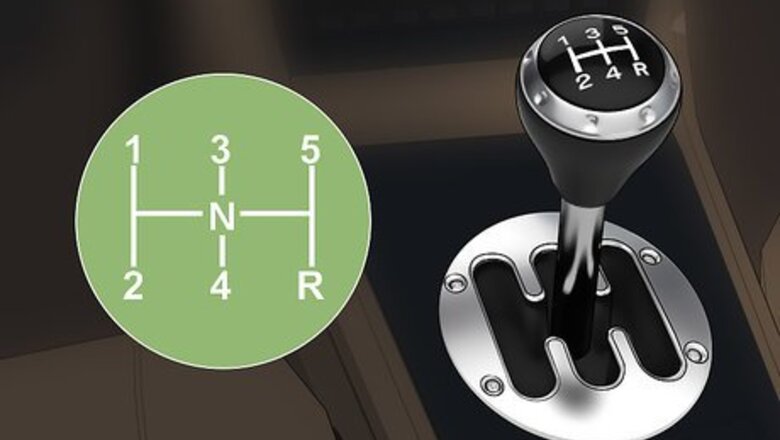
views
Familiarizing Yourself with the Gearshift
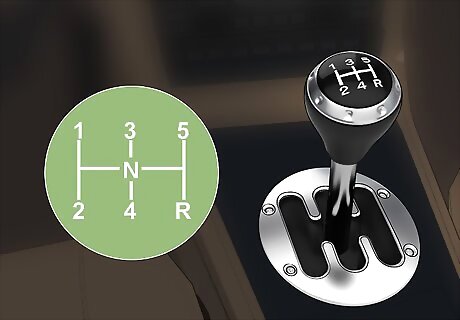
Memorize the shifting pattern for your car. If you cannot see the pattern physically, check the knob on top of the shifter to see where the gears are located. Many manual transmission cars will be in an H-shaped pattern with the odd-numbered gears on top and the even-numbered gears on bottom. For instance, in many cars, first gear is directly above second gear, third gear is to the right of first gear and directly above fourth gear, and fifth gear is to the right of third gear and directly above reverse. Neutral position may be indicated with the letter N. Otherwise, your car is in neutral as long as your shifter isn’t in any other gear.
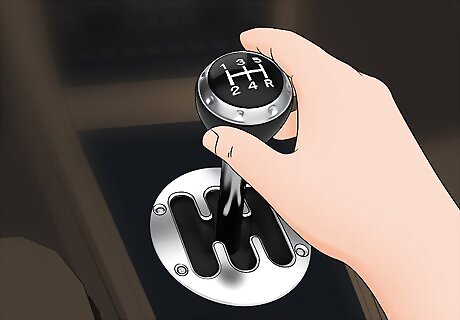
Use your right hand to change gears. Manual transmission cars require you to actively switch between the gears. Keep your right hand on the shifter so you’re prepared to change gears. Avoid using your phone or adjusting the radio when you drive a manual transmission. Focus on shifting gears and on the road in front of you.
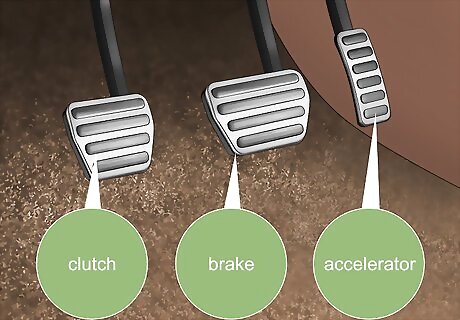
Locate the clutch pedal to the left of the brakes. Use your left foot to locate the pedal on the far left side. Press the clutch down completely whenever you need to shift gears. Avoid holding your foot on the clutch, or else you could wear it down and make it more difficult to shift as your car ages.
Starting the Vehicle
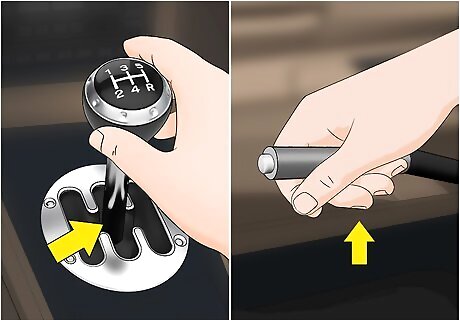
Start in neutral with the parking brake engaged. Since manual transmission cars don’t have a parking gear, the vehicle should already be in neutral with the parking brake on. Check to make sure the shifter is set to neutral and your parking brake is on. If the parking brake isn’t engaged, your vehicle will roll. Most cars have a light on the dashboard signifying if the parking brake is activated.
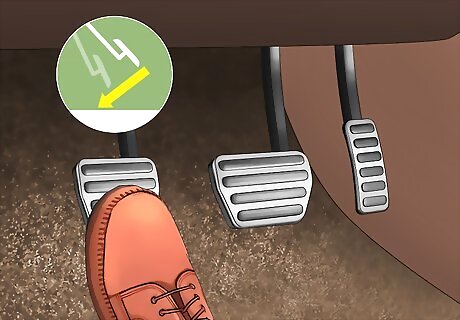
Use your left foot to depress the clutch. When you’re ready to start your car, place your left foot on the clutch pedal and press it all the way down. Only use your left foot on the clutch pedal so you can control the brakes and gas with your right foot.
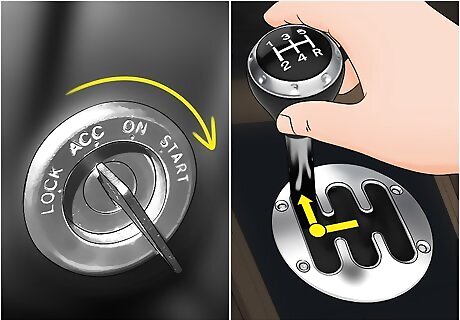
Turn the key in the ignition and shift to first gear. Start your car and wait for the engine to roll over. Make sure you keep the clutch depressed with your left foot. Use the shifter on your right side to transition into first gear. On a standard 5-speed car, the first gear is located to the left and up on the gear shift. Otherwise, check the top of your shifter to see if it has a guide to where the gears are located.
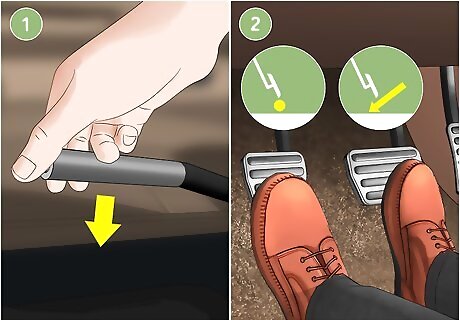
Release the parking brake and press on the brake pedal. Check your dashboard to make sure the parking brake is fully disengaged. As soon as you release the parking brake, your car will start to roll slightly.

Rev the engine between 1,500-2,000 RPM. Watch the tachometer, the dial that measures your engine rotation speed, so you know when to take your foot off the clutch. You’ll feel a rocking movement on the pedal when the clutch disc tries to catch once your engine hits the right speed. If you run at lower RPM, your vehicle will stall and you will have to start your car again. When you feel the clutch disc trying to catch, this is known as the “friction point.”
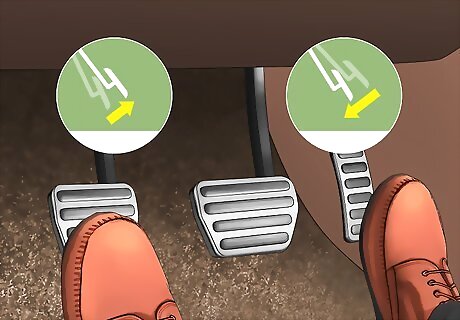
Lift your left foot off of the clutch. Slowly take your foot off the clutch to release the pressure. Your car will start rolling forward. Press the gas pedal down slightly to start accelerating.
Upshifting Your Car
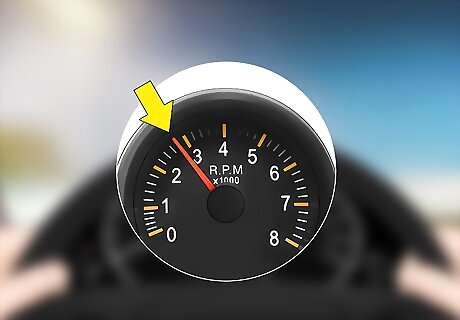
Shift gears when you’re between 2,500-3,000 RPM. Watch the tachometer on your dashboard to see when you reach the right RPM. No matter what gear you’re driving in, plan to shift at the 2,500-3,000 RPM range. Avoid shifting gears at a higher or lower RPM since it may cause your car to jerk or stall.
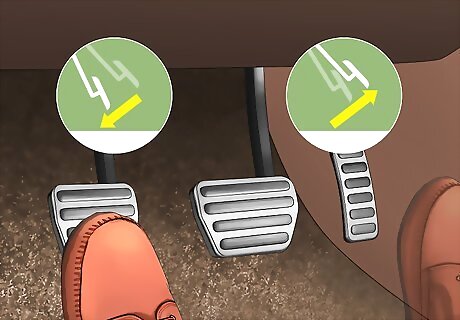
Lift off of the gas with your right foot and push the clutch in with your left foot. When you’re ready to shift ease off the accelerator completely. Use your left foot to press the clutch in all the way. This allows you to change gears using the shifter.
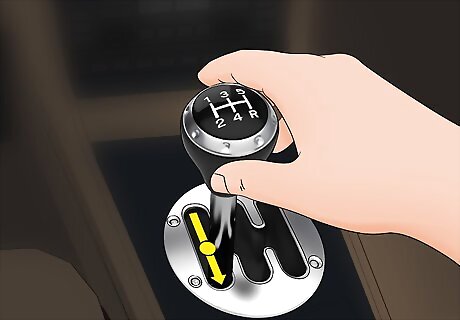
Move your shifter into the next gear. Adjust the shifter so it’s in the next gear up. For example, if you were in first gear, shift to second gear. Do not skip gears or else your car could jerk or stall. Check the layout of the gears on top of the shifter.
Let out the clutch slowly until you feel the friction point. Ease your left foot off of the clutch a little at a time until you feel the clutch disc rocking through the pedal. This point is when your car starts to shift gears. You can also look for your RPM to drop on your car’s tachometer to determine when you reach the friction point.
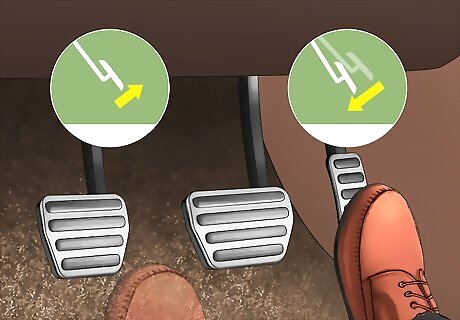
Press down on the accelerator as you ease off the clutch. Imagine each of your feet on the sides of a seesaw. Ease onto the accelerator as you lift off the rest of the clutch. Depress the gas pedal and lift off the clutch at the same speed. If you push the gas pedal too fast, the car may jerk and it won’t be a smooth transition between gears.
Downshifting the Vehicle
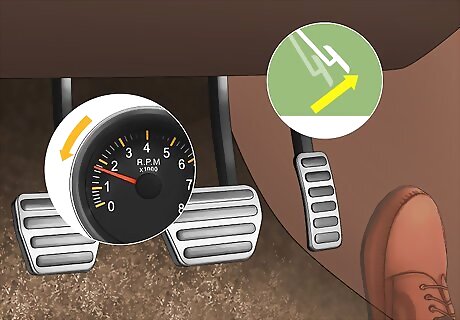
Take your foot off the accelerator. Lift your foot from the gas pedal so you aren’t accelerating anymore. This will make your RPM slowly decrease so it’s easier to downshift.
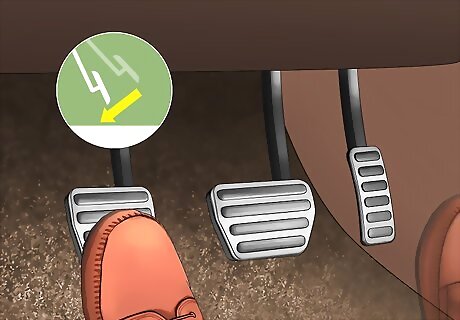
Press down on the clutch completely. Use your left foot to fully depress the clutch. Make sure it’s all the way in, or else the shifter won’t work.
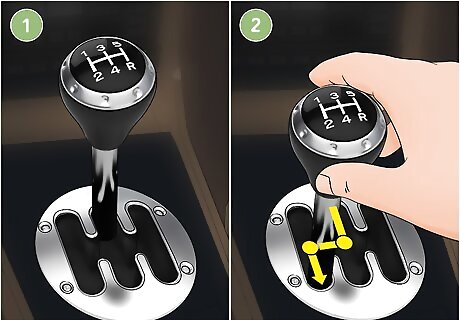
Move the gearshift down to the next lowest gear. Only move to the next gear down if you’re driving. For example, if you’re in third gear, use the shifter to move into second gear. If you’re coming to a full stop, put the shifter into neutral. You don’t need to feel for the friction point when you’re going into neutral.
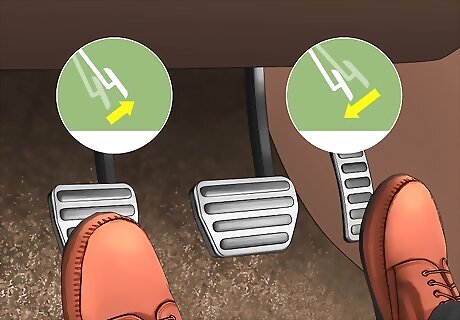
Lift your left foot off the clutch slowly while pressing on the gas. Once you’ve shifted gears, you can start taking your foot off the clutch. When you feel the pedal rocking and the clutch disc start to catch, ease back onto the gas pedal to make a smooth transition between gears. Watch for when your RPM drop on your car’s tachometer to determine when you reach the friction point.
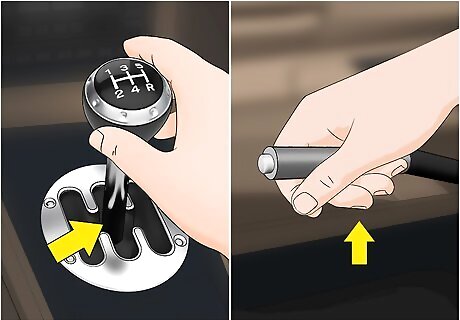
Engage the parking brake when you park your car. Make sure your car is in neutral when you plan to park it. Lift the parking brake so it’s activated, or else your car will roll when you try to stop it. If you leave your car in gear when you turn it off, it will jump forward the next time you try and start it.
Driving in Reverse
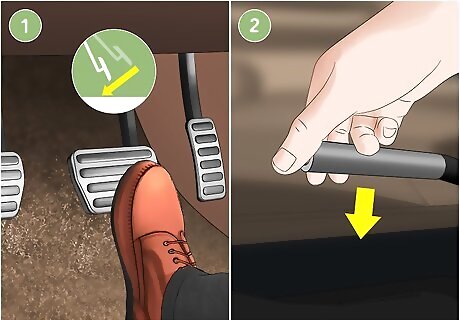
Press the brake pedal with your right foot and take off the parking brake. Once you have your foot firmly on the brake, disengage the parking brake with your car in neutral. This will keep your car from moving.
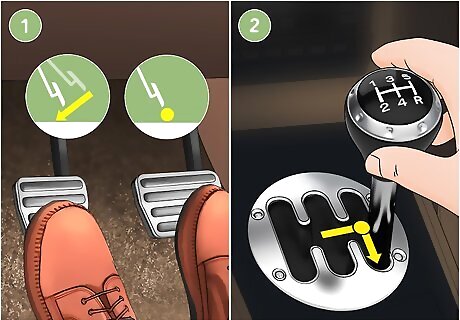
Engage the clutch with your left foot and shift into reverse. Press the clutch down completely, or else you won’t be able to shift gears. Once you have the clutch down, use your gearshift to change from neutral to reverse. Keep your other foot on the brake pedal. Check your shifting pattern to find the reverse gear. Common places for reverse are in the bottom right or top left of the pattern.
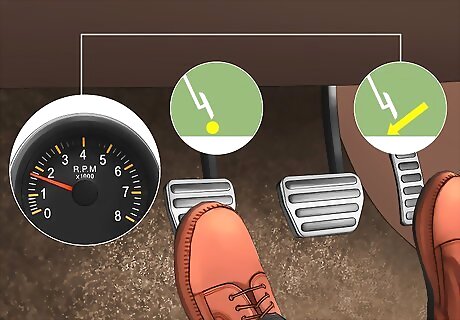
Rev the engine up to 1,500-2,000 RPM. With your left foot still engaging the clutch, switch your right foot over to the gas pedal and press down slightly. Watch the tachometer on your dashboard to see your engine’s RPM.
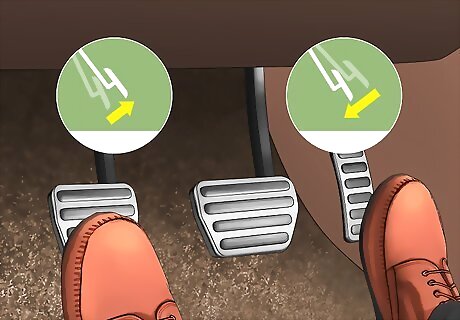
Let off the clutch until your car starts moving backward. Ease pressure off of the clutch pedal until you feel the car start to move backward. Once you’re finished driving in reverse, press back down on the clutch and use the brake pedal to stop.



















Comments
0 comment